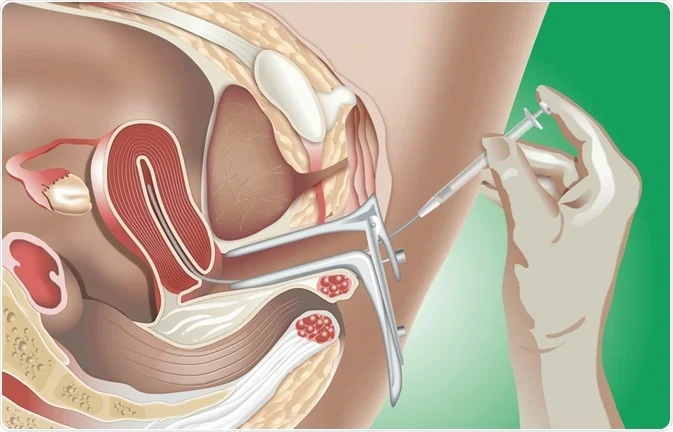From the very start, I had countless symptoms of endometriosis, yet no one seemed to take me seriously. Meet Jess, a 28-year-old living in Leicester with her partner, Mike, who is 32. Jess’s struggle began when she first got her period at the age of 14. “It was a mess from day one,” she recalls. “Some months I’d have excruciating cramps and heavy bleeding, and other months, I wouldn’t bleed at all.” Doctors prescribed the birth control pill, which helped a bit, but when Jess went to university, things spiraled.
“The pain was relentless,” she explains. “Some days it felt like a dull ache, while on others, it was sharp and debilitating. On a typical day, I’d rate the pain around a seven or eight out of ten, and on the worst days, it hit a ten. I relied on ibuprofen just to get through.” The constant discomfort affected her studies, leading Jess to take a year off her design degree for her health.
“Things settled a little during my break,” she shares, “but once I returned to school, the pain hit hard again. I was bleeding unexpectedly and felt drained, making it impossible to concentrate on my work.” Jess’s mother, Sarah, a nurse who specializes in women’s health, was deeply concerned. Over the years, they consulted numerous doctors, but the common response was dismissive: “It’s just part of being a woman.”
Understanding Endometriosis
The symptoms of endometriosis can be varied, ranging from mild to severe, and they often cause significant pain, especially during menstruation. Common signs include pelvic pain, painful periods, discomfort during intercourse, excessive bleeding, chronic fatigue, and spotting between periods. Jess saw between 15 to 20 doctors before Mike joined her quest for answers. “It felt like we were hitting brick walls,” he admits, expressing frustration after one particularly dismissive doctor visit. “We ended up in A&E multiple times, and it was disheartening to see a doctor shrug off her pain.”
Eventually, they found a doctor who listened. Jess was referred for an exploratory laparoscopy at a local hospital, but the waiting list was a daunting 24 months. As Jess struggled month after month, Sarah knew she had to act. Noticing Jess losing weight, with her BMI dropping to an alarming 16.9, she reached out to her colleagues at a fertility clinic in Glasgow.
Finding Answers
A consultant reviewed Jess’s case and urged her to come in for an emergency appointment. “I was so scared yet relieved that someone finally took me seriously,” Jess remembers. A scan revealed smaller-than-average ovaries with cysts, and the diagnosis of endometriosis was confirmed. Tests showed her AMH levels were critically low, which indicated a reduced egg count.
Jess’s laparoscopy was expedited, and during the procedure, doctors drained a cyst and reduced endometrial tissue using heat. They discovered tissue outside the uterus on her bladder and kidneys, and deep nodules on her bowel that couldn’t be treated. By then, Jess was 24, and she and Mike realized they needed to start trying for a family immediately. With her low AMH levels and damaged ovaries, they opted for private IVF since NHS funding was unavailable due to their low chances of conception.
The IVF Journey
“The team at the clinic was incredibly supportive,” says Jess, noting her mom’s presence made a huge difference. They revamped their diet, incorporating fertility-boosting foods like smoothies, nuts, and oily fish while avoiding processed snacks. Jess knew managing stress and getting enough rest was crucial for her chances of pregnancy. “I took a lot of time to relax,” she said.
The medication for their IVF journey was shipped from Glasgow to Leicester, and while scans occurred locally, they traveled back for egg retrieval. However, just before their trip, a test revealed Jess’s follicles weren’t ready. “We ended up in Scotland for eight days, which was a mix of nice and stressful with all the extra injections and appointments,” says Mike.
When the day arrived for egg retrieval, Jess felt anxious but was reassured by her mom and the clinic staff. They retrieved seven eggs, which were fertilized with Mike’s sperm. Five days later, they had one top-quality embryo and another of lesser quality. The best one was transferred, and ten days later, Jess received the joyful news of her pregnancy. A few weeks later, a scan revealed they were expecting twins!
“Honestly, it was a bit expected,” Jess laughs, noting that twins run in both their families. Their daughters, Lily and Zoe, arrived a bit early at 34 weeks but are now happy and healthy. Reflecting on her journey, Jess admits, “It’s wild how far I’ve come, and while I managed it mentally, there are still some moments I don’t remember clearly.”
Life After Diagnosis
Despite still experiencing some painful periods, Jess finds them manageable now. “As long as I’m not too stressed or exhausted, I can usually handle it.” Mike supports her in daily life, taking on cooking and other tasks to ease her burden. “Seeing her struggle was tough, especially since endometriosis is often overlooked. It’s just not right,” he says.
They hope sharing their story will inspire others facing fertility challenges to seek help early. “We’re incredibly thankful to the team at the clinic for everything they did,” Mike adds. “Now, we have our beautiful daughters, and that means the world to us.”
Further Reading
If you want to know more about pregnancies with twins, check out this post on our blog. For couples navigating their fertility journey, this resource can offer valuable insights. Additionally, if you’re interested in pregnancy and home insemination, you might find this an excellent resource.
Conclusion
In summary, Jess and Mike’s journey highlights the struggles many face with endometriosis and fertility. Despite numerous setbacks and challenges, their determination and the support of healthcare professionals led them to the joyful outcome of becoming parents to twins.

